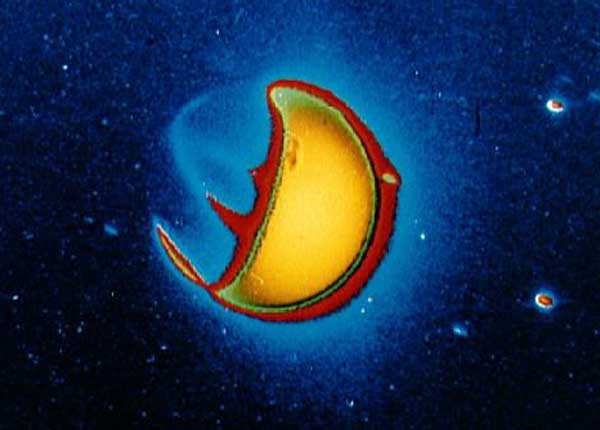NASA’s new GOLD mission will be studying Earth’s upper atmosphere, some 22,000 miles above the surface, in a bid to give us better GPS and more reliable navigation.

Image credits NASA.
Earlier today, NASA researchers attended a live feed in which they discussed the agency’s next mission. On January 25th, launch facilities in Kourou, French Guiana will blossom with rocket exhaust. Hitching a ride on the back of the SES-14 communications satellite launching on that day, NASA is also sending a mission to space. GOLD, the Global-scale Observations of the Limb and Disk mission, will analyze the boundary between Earth and outer space. The data will be used to get a better understanding of how it changes over time and, along with another upcoming satellite, called ICON, to determine how space weather affects the highest layers of our atmosphere.
“For years, we’ve been studying the Earth’s upper atmosphere — thermosphere and ionosphere — and we’ve been looking at those in detail from the ground and from low-Earth orbit missions,” said Richard Eastes, the principal investigator for GOLD from the University of Central Florida.
“We wanted to be able to back off and get the big picture, get a whole hemisphere at once. That lets us put things into context that we can’t understand when we’re just looking at one little piece.”
GOLD’s job will be to analyze the ultraviolet radiation emissions of the upper atmosphere. The craft will also be the first one to take a thorough record of the temperatures in these top layers according to Eastes. As such, it will be stationed some 35,500 kilometers (22,000 miles) above the surface in a geostationary orbit — meaning it will match Earth’s rotation to stay in a fixed spot relative to the planet’s surface.
The thermosphere, the part of the atmosphere over than 97 km (60 miles) above Earth’s surface, and the ionosphere, a skin of charged gas formed on the outskirts of our atmosphere as solar radiation strips electrons from atoms (creating ions), are of particular interest for the mission. Our understanding of both these formations is currently limited. For example, we know that it’s heavily influenced by what the sun does — solar flares, for example, can dramatically alter the state of the ionosphere, and influence GPS-like systems. Solar radiation and solar wind hitting Earth’s magnetic field can cause geomagnetic storms and other space weather.

Image credits NASA’s Goddard Space Flight Center / Duberstein.
But scientists are becoming increasingly aware that going-ons on Earth also influence these layers. From commonplace activity, such as whether, to extreme events, such as tsunamis, events taking place below these layers also seem to have a profound effect on their nature, but ones that are still barely known — nevermind understood.
For example, tsunamis create waves in the air, and those waves move upwards, and the waves could potentially cause changes even at the very boundary between the Earth and space,” said Sarah Jones, GOLD mission scientist at Goddard, during the stream.
“GOLD is studying in particular how to tease out the effects coming from the sun above and Earth below.”
It’s not a pursuit of pure science, either. Our GPS systems and communication infrastructure stand to benefit greatly, should we learn how to accurately map and model these regions. Right now, we only have the capacity to observe changes once every several hours (which is quite poor), and the models at our disposal can predict changes about one day in advance (but are still not beyond errors).
The data beamed back from GOLD will be a gold mine for scientists trying to refine such models. The craft will let us constantly keep tabs on what the upper atmosphere does throughout the day, so we’ll also be able to spot anything going awry much more easily.
ICON (Ionospheric Connection Explorer), GOLD’s partner craft which will be launched later in 2018, will fly through the upper atmosphere at about 560 km (350 miles) to give a detailed look and complement GOLD’s bird-eye view. This remote-sensing coupled with on-site observation will allow researchers to see what’s happening to the boundary between Earth and space in detail and at large. Taken together, the craft will help us understand the processes that shape our planet’s troposphere and ionosphere, and how these, in turn, impact the surface.
Here’s a simulation of the data GOLD is expected be beaming back to NASA. You can even see ICON from up there!
“Not only is it telling us about fundamental science, which is pertinent not just to what happens here in our solar system, but in fact in other solar systems, exoplanet systems — but also, all of this energy and matter interacts with our technology,” Alex Young, the associate director for heliophysics science at Goddard, said during the stream.
“It’s interacting with spacecraft, sometimes disrupting them, and it even creates a really nasty environment for astronauts. Understanding that is important also for space travel near the Earth and through the rest of the solar system.”



